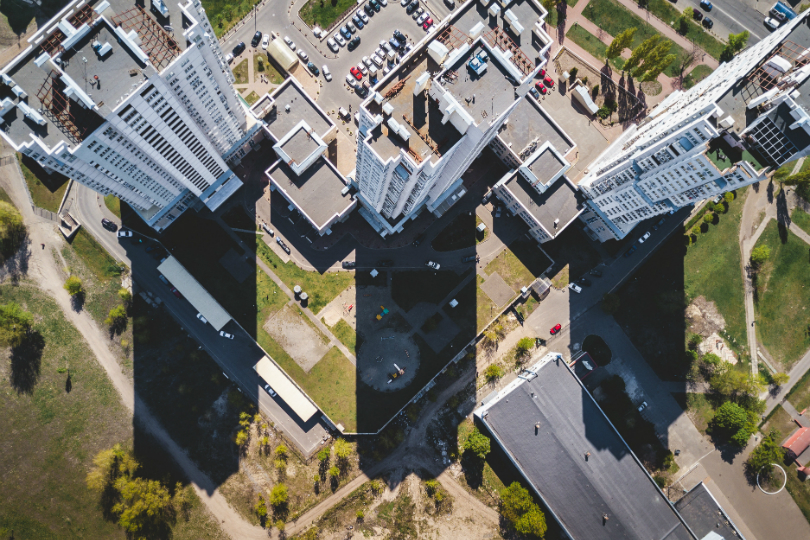The rise and subsequent leveling-off of all things crypto has luckily caused a little “cooling off” period. There was what many investment managers might call a bit of irrational exuberance in cryptocurrencies, blockchain, and tokenization. However, that doesn’t mean blockchain-based investing is dead. Nor does it mean the hay day is over.
In fact, most technology and investment professionals agree we’re still in the early days. Now that expert professionals can meld compliance with technology, the opportunities for rapidly changing the way investors transact will be changed forever. Particularly as it relates to real estate investing.

Understanding How Tokenization Works in Real Estate
Unlike payment tokens (e.g. Bitcoin, Litecoin and Ethereum) or utility tokens, asset backed tokens—like those used in real estate tokenization—take a real, tangible asset such as a debt or equity security, real estate or real personal property and tie it to the blockchain ledger in a process called tokenization. Instead of an ethereal value based on supply/demand economics, attaching an existing, hard asset to the blockchain ledger allows for something of direct value to be exchanged and traded.
While real estate is a perfect example, asset trading on the blockchain will work with numerous other real world property including assets like business debt, commodity products like gold and silver, business equity, insurance, royalty agreement and even rights to songs and movies.
Most surmise that residential and commercial real estate interests will be one of the first areas of tokenization disruption for the following reasons:
- Real estate is hard asset that is already quickly and easily exchanged.
- Real estate typically has a very set real-world valuation based on solid structure
- Real estate operations are more easily executed unlike say business equity or debt
- When the hard asset of real estate is tied to the blockchain, it provides the investor with
How Real Estate Benefits from Tokenization
Thanks to the real-asset nature of both commercial and residential real estate, it is an easily-understood investment that can be sensibly tied to the blockchain ledger.
Real estate tokenization allows for fractionalized ownership. This is beneficial for a couple of reasons. First, fractionalized ownership of shares in a real estate investment means large capital projects that include both debt and equity can more easily owned in a fractional way by large amounts of smaller investors. And, thanks to smart contracts and the automation of certain asset payouts, the fractional ownership is more easily managed than today’s manual process. Second, fractionalized ownership means greater diversification and asset interoperability. Systemic downside risk is greatly mitigated when I, as an investor, can spread my real estate investment holdings across a larger number of uncorrelated real estate assets.
In addition, tokenization of real estate assets nearly removes the middle-man from the transaction. Yes, some have touted a complete removal of any type of a broker, but fortunately even in real estate humans still interact with humans. However, that does not mean that a great deal of red tape, expense and process is removed complete. It just means that the ledger is performing a greater quantity of the heavy lifting. Thinks like discussions related to title and ownership will at least be somewhat offloaded to the ledger (that is, in the perfect blockchain utopia).
Relatively speaking, real estate is less complicated transaction, it is likely one of the first investment areas to be disrupted by the incoming wave of mass asset tokenization events. The wave is most certainly coming.
How Will Real Estate Investing Change?
Perhaps one of the greatest boons for real estate tokenization investing is the creation of a liquid exchange between buyers and sellers of fractionalized real estate assets. Liquidity means that there is not only a liquid or free market for the buying and selling of shares of a given asset, but that there is a seamless way of doing so. Tokenization ensures this is the case in both instances.
Let’s showcase a fictional example. Jim buys a 1% equity stake in a tokenized real estate issuance for a large apartment complex in downtown Manhattan. Thanks to a strong market, three years later and after the completion of the development of the property, Jim’s equity stake is now worth about 3x his initial investment. Jim would like to cash-out and put his money in a separate investment.
In a former world, doing so would require a greater deal of restriction. But, thanks to the automated compliance processing and the ability to buy and sell readily among various investors, Jim can sell his shares (within the rules of compliance) on the open market to the highest willing buyer. That buyer then takes his fractional ownership and all the rights associated therewith into the future. Jim can more quickly liquify his investment into real cash which he can now use at his own discretion.
In addition, Jim can execute on his transaction with faster speed and at a lower transaction cost thanks to disintermediating certain steps using technology.

Conclusion
Blockchain and tokenization are currently experiencing the growing pains of a nascent industry. We are still, and will likely remain for several more years, in the early stages of a very interesting, but promising technology that will change the way in which we transact in everything from real estate to buying fine art. The climb to the summit is likely to get more rocky as overly-exuberant technologists try to marry their applications to stringent compliance teams.
While there are still hurdles to climb, it is expected that blockchain will one day greatly disrupt and optimize the current structure of real estate investing, only a few of which we have discuss here.